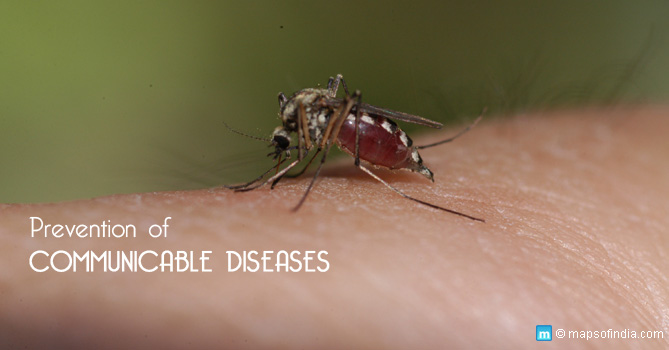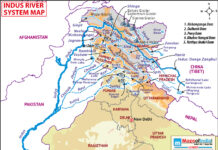We are still having major outbreaks of communicable diseases such as dengue, chikungunya, H1N1 and swine flu. Apart from these, there are isolated reports of Japanese encephalitis and an unclassifiable viral illness doing the rounds. In children, diarrheal diseases are highly prevalent, leading to significant morbidity and mortality in the under-5 age group. Vector borne diseases such as dengue, chikungunya, swine flu, H1N1, malaria and Japanese encephalitis are showing no signs of abating due to the continuing neglect of the environment by all concerned: civic agencies and general public alike. Most of the vector borne diseases is spread by mosquitoes. Diarrhoeal diseases, on the other hand, occur due to contamination of food and water with agents such as rota virus (in children), and due to other causes such as typhoid, dysentery and cholera. In India, 13% of all deaths in the under-five age group occur due to diarrheal diseases. Those with non-communicable diseases such as diabetes, heart diseases, cancers and respiratory diseases; and those in the extremes of age groups, such as children and the elderly, are particularly prone to the life-threatening consequences of these infections. Besides, for most of the viral illnesses, there is no effective treatment. Unlike bacterial infections, there is no anti-viral antibiotic that can be prescribed to eliminate the virus. This is so because viruses – in contrast to bacteria – are notoriously adept in changing their serotypes and strains. This basically means that they keep coming back in newer avatars making it difficult to either treat them effectively or come up with a single vaccine that can prevent all of them from causing illnesses. Just this month, 2 deadly subtypes of dengue, which rarely occurred previously, were identified in Delhi. However, in the middle of these seemingly insurmountable problems, there is some good news. The World Health Organisation has noted that India has reduced by more than half the cases of malaria in the last 15 years. Buoyed by this, the National Vector Borne Disease Control Programme of the Government of India aims to rid the Asia-Pacific region of malaria by 2030. If malaria could be thus controlled, so could all the rest of the vector-borne diseases.
Preventive measures
Preventing the spread of the disease is our best bet in reducing the number of infections, and hopefully fully eliminating it. Pollution pertaining to water, environment and air has to be curbed. Some of the recommended actions to be undertaken by each one of us include: maintaining personal and environmental hygiene; clearing waterlogged areas (since mosquitoes breed in these areas); having extra protection against mosquito bites; if you happen to live in an endemic area, getting yourself vaccinated; and ensuring that an early diagnosis is made and treatment initiated without delay. In the case of diarrheal diseases, providing safe drinking water and food, and ensuring adequate and proper sanitation go a long way in preventing them. Infants should be breastfed compulsorily as breast milk provides the immunity to the child that is required to ward off infections. Vaccination, maintaining general nutrition and monitoring the growth of children is also important in reducing the incidence of diarrheal diseases in early childhood.
Related Information:
‘Leptospirosis’: A Deadly Disease in the Andamans
Dengue and Chikungunya: Causes, Symptoms, Prevention, Treatment
Organ Donation in India
Jaundice – Causes, Symptoms, and Prevention
Health & Fitness Gadgets
Hepatitis B in India: Guidelines for Prevention, Symptoms, Causes, Risks & Treatment
Amendments Proposed in Anti-smoking Law in India
The 10 Ways to Quit Smoking
How Useful are E-cigarettes?
Tobacco – The Leading Cause of Illnesses
How to Stay Healthy During Monsoons? Do’s and Don’ts
Green Tea: Types, Benefits and Side Effects
Japanese Encephalitis in India – Guidelines for Prevention, Control & Symptoms
Swine Flu Continues to Ravage India
Ebola Virus Outbreak – Is India Prepared?
India To Be Certified As A Polio-free Nation By WHO
Non-Communicable Diseases – Take Care, Before It’s Late
Swine Flu: What You Need to Know and Do
Prevention of Heart Attack and Other Related Heart Diseases
Leprosy – Causes, preventions and eradication programme
Prevalence of Diabetes in India
Can Delhi Handle an Ebola Outbreak
The Fever : Vaccination Still An Elusive Proposal
A Reality Check on State of Mental Health in India
Sharp rise in non polio Acute Flaccid Paralysis after polio-free status
How to Prevent Hair Loss in 10 Tested Ways?






